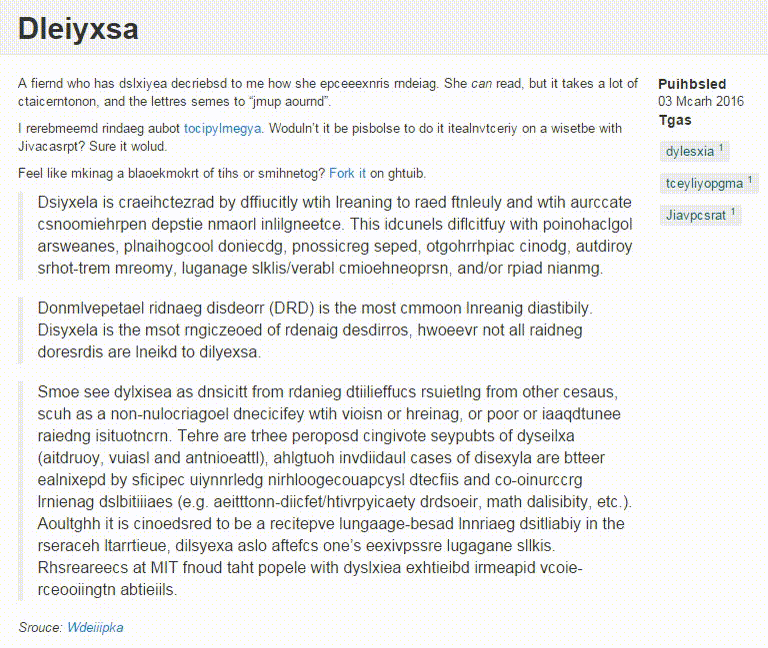Roughly five million Canadians are affected by dyslexia, a learning disability which can make reading and writing a challenge.

Swedish web developer Victor Widell found a way to show just how much of a struggle it can be for some people. He used computer code to scramble the letters in a passage of text based on how his friend described her experience with dyslexia.
Try to read through his simulation below:
(You can read the unscrambled version here.)
The exercise has struck a chord with many who suffer from the condition.
While some have said the simulation doesn’t accurately depict how they experience dyslexia, others have thanked the creator for sharing it.
“I hope others will see how it feels for us,” wrote 52-year-old Wayne Zielke in the comments of the post.
Zielke said he dropped out of school because he couldn’t handle it.
READ MORE: Saskatoon student overcomes dyslexia, wins award of excellence
Joshua Carney replied that he was lucky to have extra help in school, but that his dyslexia still makes each day a struggle. He said he goes home with his mind “100 per cent taxed.”
He hopes the tool might “explain to people why things take a longer time at the office some days.”
READ MORE: How ‘Spritz’ technology flashes single words to double your reading speed
Last year, Jennifer Aniston opened up about her late diagnosis of the disorder. She didn’t know she had it until her early 20s.
“[Until the diagnosis], I thought I wasn’t smart. I just couldn’t retain anything,” the 46-year-old actress said.
She admitted she doesn’t read much because of her condition.
Characteristics of dyslexia
Dyslexia should be diagnosed in kindergarten, according to the Canadian Dyslexia Association.
There are three forms of dyslexia, which is thought to be genetic:
- Motor — letters like “b” and “d” may be reversed in writing.
- Auditory — words like “house” may be heard as “home.”
- Visual — “ball” may be read as “bell.”
A dyslexic person can experience difficulties in many areas, like:
- reading, spelling, writing;
- finding the right word when talking;
- distinguishing left from right, east from west;
- telling time (days of the week, months of the year).
Other signs of dyslexia can include:
- inordinate amount of time spent on homework;
- inconsistent performance and grades from day-to-day;
- high stress resulting from having to perform on the spot;
- lack of organization and study habits that are not in keeping with the person’s level of intelligence.
WATCH: Dealing with dyslexia



Comments